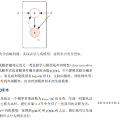To enable robots to achieve high level objectives, engineers typically write scripts that apply existing specialized skills, such as navigation, object detection and manipulation to achieve these goals. Writing good scripts is challenging since they must intelligently balance the inherent stochasticity of a physical robot's actions and sensors, and the limited information it has. In principle, AI planning can be used to address this challenge and generate good behavior policies automatically. But this requires passing three hurdles. First, the AI must understand each skill's impact on the world. Second, we must bridge the gap between the more abstract level at which we understand what a skill does and the low-level state variables used within its code. Third, much integration effort is required to tie together all components. We describe an approach for integrating robot skills into a working autonomous robot controller that schedules its skills to achieve a specified task and carries four key advantages. 1) Our Generative Skill Documentation Language (GSDL) makes code documentation simpler, compact, and more expressive using ideas from probabilistic programming languages. 2) An expressive abstraction mapping (AM) bridges the gap between low-level robot code and the abstract AI planning model. 3) Any properly documented skill can be used by the controller without any additional programming effort, providing a Plug'n Play experience. 4) A POMDP solver schedules skill execution while properly balancing partial observability, stochastic behavior, and noisy sensing.
翻译:为使机器人能够实现高层次的目标,工程师通常会写一些应用现有专门技能的脚本,例如导航、物体探测和操作来实现这些目标。 写好脚本具有挑战性, 因为他们必须明智地平衡物理机器人动作和传感器固有的随机性, 以及它所拥有的有限信息。 原则上, AI规划可以用来应对这一挑战, 并自动产生良好的行为政策。 但是这需要克服三个障碍。 首先, AI必须理解每种技能对世界的影响。 第二, 我们必须弥合我们理解技能的抽象程度与其代码中使用的低级别变量之间的差距。 第三, 需要大量整合努力才能将所有组成部分联系起来。 我们描述一种将机器人技能纳入一个工作自主机器人控制器的方法, 该操作器可以安排其技能以完成特定任务并带来四个关键优势。 1) 我们的Genecial Skill文件语言(GSDL) 使得代码文件更加简单、 压缩, 并且使用来自概率性编程语言的理念更清晰地表达。 2) 直言的抽象的抽象的抽图绘制(AM) 能够弥合低级别机器人码码码码码码码码码码码码码码码码码码码码码码码码码码码码码码码码码码码码码和抽象化的操作, 以及使用的任何缩缩缩缩缩缩缩操作模型, 。





